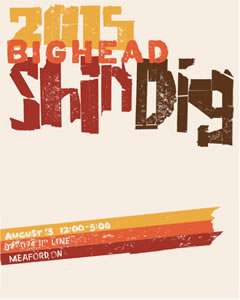
There has been a lot of talk about the additional Mortgage Rules aka “Stress-Test” coming into effect on January 1st, 2018. We’ve broken it down for you into simple terms, please give our team a call anytime to get your questions answered at 705-445-5520 or email us info@chriskeleher.ca!
First. Let’s make no assumptions and start with some basics. A mortgage is a loan, specific to real estate. It’s just a fancy word for ‘buying a house with the bank’s money’. Essentially, the bank buys your house and you say, ‘I will pay you back Bank, really slowly and you will make a ship-ton of money. At the end, I will pay the rest of what I owe you in one lump sum OR… I’ll ask you for more money OR… you take it away.’ (note to self: next life, be the bank).
Your mortgage can be many things, including open, closed, fixed or variable but for the sake of this topic, you’ll need to understand that your mortgage can be either ‘insured’ or ‘uninsured’, as follows;
- An ‘insured’ mortgage means… you pay less than 20% down and therefore pay for insurance (which protects the bank’s investment if you run away).
Is that you? If so, you can stop right here and go for a tea, because the new stress-test doesn’t apply to you.
- An ‘uninsured’ mortgage means… you pay 20% or more down or have more than 20% paid off at renewal time.
Is that you? If so, continue on because you may have some decisions to make this Jan 1st when it comes to refinancing that mortgage or making or new purchase!
If you’re still with me that means you have plans for a sweet new pad, or a refinance on your existing sweet pad. But before we subject you to further learning, let’s figure out if your lender situation keeps you in the crowd;
- Are you banking with an unregulated lender, such as a credit union or alternate lender?
Yes? You too may go for a tea.
- Are you up for renewal and plan to stay with your current lender?
Yes? You may join the tea crowd too!
One of the little publicized facts is that the new test will not be required if you stay with your current lender upon renewal and/or you are working with an unregulated bank, such as a credit union or alternate lender.
So far, we have determined that;
- you plan to put 20% down (or more) on a new purchase, or
- you paid more than 20% down on your current mortgage and are up for renewal, and
- you are banking with a provincially regulated lender.
This means that a new type of stress-test applies to you. The original ‘stress-test’ was brought in last year for 1st time Homebuyers who put less than 20% down on a mortgage. They had to qualify for a mortgage at the Bank of Canada rate, currently 4.99% and opt in for insurance. The new stress-test, coming into effect on Jan 1st 2018 applies to everyone that is in your situation, as follows;
You will be required to qualify at a rate 2% higher than the contract rate being offered by your lender OR the Bank of Canada 5-yr rate (currently 4.99%), whichever is the higher amount. I am emphasizing qualify because this doesn’t mean you have to pay 2% more, it means you have to show that you can pay more if need be. There is no change in the actual payments you’ll be making on your mortgage, only the way you qualify for it.
i.e. Through the stress-test you show that you can afford a $1500 mortgage payment at 4.99% but your actual mortgage payment is $1200 at the lender rate.
Why? At this point you may be asking yourself why this has come about. Well, there is concern for the risks posed by high household debt, rising interest rates and growing property values in some large cities. I suppose it makes sense to make sure you aren’t totally maxed out. The “stress-test” ensures homeowners can afford to pay their mortgage loans even if rates go up.
Worth saying again… if you’re putting between 5 and 19.99% down on your mortgage, you’re required to have default insurance and these changes won’t affect you, at least until it’s time to renew.
For new purchases, this decreases how much house you can buy with a mortgage loan, but ensures that you buy a house that you can afford. Should it be up to them to decide if you want to max yourself out? We aren’t touching that one with a ten foot pole BUT we are here to help.
Options. So, what are your options? The #1 piece of advice is to consult with a Mortgage Broker who will help you to simplify your situation and find the best rate for you. It’s their job, they will know the cool workarounds that will match you with the best strategy and rates. If you’d prefer to go it alone check out the Tools, Terms and Further Resources for you.
And that’s all folks… that’s the new stress-test, which could use a name change because it actually aims to reduce stress. They could maybe call it the ‘affordability’ test, as it creates a buffer that ensures you buy a house you can afford. If you can show you can pay $1000/month but you only have to pay $800 that means you have $200 wiggle room. Where it gets sticky is when that $500k sweet pad you had your heart set on is now out of range… but then again, if that $500k pad had you maxed out, could you enjoy it with no furniture? …
I hope this has helped to simplify the new stress-test for you! If you have more questions or would like to talk to a member of our team please reach out anytime at 705-445-5520 or email us at info@chriskeleher.ca!
Financial Tools
Visit our Financial Tools page
- Compare different mortgage options side by side.
- Land Transfer Tax Calculator
- CMHC Insurance Calculator
- Links to additional resources
Estimate your total monthly expenses, see what your payments will be if mortgage rates go up, and show what your outstanding balance will be over time.
Find a Mortgage Broker
Jennifer Young
Mortgage Agent
Invis – Canada’s Mortgage Expert
100 Bartlett Boulevard
Collingwood, ON L9Y 5C9
Tel: 705-445-3114
Email: jenniferyoung@invis.ca
Website: www.youngmortgage.ca
Jason Lang, MBA, CPA, CMA, FCIP
Managing Partner | Outline Financial
Mortgage & Insurance Agent
465 King Street East, Unit 15
Toronto, ON, M5A 1L6
Tel: 647-993-1590
Email: jason@outline.ca
Website: www.outline.ca
Ian Mackay
Mortgage Broker
Dominion Lending Centres RedPath Financial
120 Eglinton Ave. E., Suite 607
Toronto, ON M4P 1E2
Tel: 416-366-7284
Email: ian@redpathfinancial.com
Website: www.redpathfinancial.com
An ‘open’ mortgage means… you have a clause where you can pay down the principal, like when grandma adds a few zeros to your birthday cheque or you get a bonus for being AWESOME at work.
- A ‘closed’ mortgage means… you can’t touch the principal, you pay down your mortgage slow and steady, and the bank gets the full caboodle of interest.
- An ‘insured’ mortgage means… you pay less than 20% down and therefore pay for insurance (which protects the bank’s investment if you run away).
- An ‘uninsured’ mortgage is… you pay 20% or more down or have more than 20% paid off at renewal time. Is that you?
- A ‘fixed’ mortgage is…you lock in a rate over a 5 or 10 yr period to protect yourself. There’s a risk that banks may lower rates, but they might higher them too. The Bank will set the rate a little higher to protect themselves from the same fluctuations.
- A ‘variable’ mortgage is… your rate fluctuates with the market interest rate, known as the ‘prime rate’, and is usually stated as prime plus or minus a percentage amount. The Bank is happy to let you roll the dice and will always ensure there’s a buffer so they don’t lose money.
“The Big Six” (Provincially Regulated Lenders):
- The National Bank of Canada, Royal Bank, The Bank of Montreal, Canadian Imperial Bank of Commerce, The Bank of Nova Scotia, TD Canada Trust
Further Resources
Source: Globe & Mail Real Estate article October 17, 2017
It’s about to become tougher to qualify for a mortgage.
Canada’s banking regulator published final guidelines for its mortgage qualification rule on Tuesday, which impose tighter standards on the uninsured market. Lenders will soon be required to “stress test” all uninsured mortgage loans – those where the buyer makes a down payment of at least 20 per cent of the home’s purchase price – at the greater of the Bank of Canada’s five-year posted rate or 200 basis points (two percentage points) higher than the negotiated contract rate.
Home affordability will undoubtedly change as a result of the changes, according to calculations from RateHub.ca. The rate-comparison website looked at the maximum price a buyer could afford, under two scenarios, and compared current rules with incoming ones.
The buyer is a family with an annual income of $100,000, enough cash saved for a 20-per-cent down payment, and a five-year fixed mortgage amortized over 25 years.
For Scenario No. 1, the family’s mortgage rate is 2.83 per cent. Under incoming rules, the mortgage application faces a stress test using the Bank of Canada’s current five-year benchmark rate of 4.89 per cent. That’s because the central bank’s posted rate is higher than the family’s negotiated rate plus 200 basis points (4.83 per cent).
For Scenario No. 2, the family’s mortgage rate is 3.09 per cent. Under incoming rules, the family would be stress tested at 5.09 per cent. That’s because the negotiated rate plus 200 basis points (5.09 per cent) is higher than the BoC’s posted rate (4.89 per cent).
Either way you cut it, the family’s purchasing power will decrease when the new rules come into effect on Jan. 1, 2018.
Note: As part of its calculations, RateHub assumes monthly property taxes of $400 and monthly heating costs of $150. Calculations are based on a gross debt service (GDS) ratio limit of 39 per cent, which is the maximum allowed by the federal government. The GDS ratio is the percentage of pretax monthly household income needed to pay monthly housing costs, which include principal, interest, taxes, heating and half of condo fees. These examples do not take monthly condo fees into account, which would reduce affordability. Nor do they assume any other debt obligations a home buyer may have.
Source: Savvy New Canadians article October 24, 2017
“An example using Ratehub’s Mortgage Affordability calculator:
Old Rules: Assuming a 20% down payment, 5-year fixed mortgage rates of 2.84%, and a 25-year amortization; a family with an annual income of $100,000 can afford a home worth $693,405.
New Rules: Applying the new “stress-test”, the family must qualify for the mortgage using the greater of 4.89% and 4.84% (calculated as 2% + 2.84%). Therefore, with 20% down payment, a 5-year fixed rate of 4.89%, and 25 year amortization, the family can now afford a home worth $591,537.
The difference is that under the new rules, the family’s affordability has dropped by $101,868 (-15%). A bank that was willing to lend them $700,000 before is now only able to loan them approximately $600,000.”
Source: Globe & Mail article October 17, 2017
“The Office of the Superintendent of Financial Institutions (OSFI) unveiled a final draft of new mortgage qualification rules Tuesday, tweaking its earlier proposal to ensure home buyers will not have an unintended incentive to sign up for shorter-term mortgages.
OSFI’s new rules will require buyers who are making down payments of more than 20 percent of a home’s value – who do not need mortgage insurance – to prove they could still afford their mortgage payments if interest rates were 200 basis points (two percentage points) higher than the rate they negotiated.
OSFI superintendent Jeremy Rudin told reporters that the OSFI is making the mortgage changes because it is concerned about the risks posed by high household indebtedness, rising interest rates and growing property values in some large cities.
Mr. Rudin said his mandate is to ensure federally regulated banks have secure lending practices. He said OSFI has “ongoing contacts” with provincial regulators that oversee many credit unions and alternative lenders, but “we can’t control what we can’t control.”
OSFI’s new guidelines also clarified that borrowers who are renewing mortgages will not have to meet the new stress-test standard as long as they are staying with the same bank. However, renewals done with another lender will have to qualify under the revised standards because they require new underwriting.”
Read full article…
Ten ways the new mortgage rules will shake up the lending market
Source: Globe & Mail article October 17, 2017
“Why the Office of the Superintendent of Financial Institutions (OSFI) did it: Forcing people to prove they can afford much higher rates will substantially increase the quality of borrowers at Canada’s banks. OSFI argues that this will insulate our banking system from economic shocks, and to the extent it’s correct – that’s good news.
… Provincially regulated lenders win: Unless provincial regulators follow OSFI’s lead (if history is a guide, they won’t), it’ll be a bonanza for some credit unions. Many credit unions will still let you get a mortgage based on your actual (contract) rate, instead of the much higher stress-test rate. That means you’ll qualify for a bigger loan – if you want one. We could also see a few non-prime lenders charge lower rates to help people qualify for bigger mortgages, while tacking on a fee to mortgage for that privilege.
… Trapped renewers: Lenders are thrilled about one thing: customer retention. As many as one in six people renewing their mortgage could be trapped at their existing bank because they can’t pass the stress test at another lender. And if a bank knows you can’t leave, you can bet your boots they’ll use that as leverage to serve up subpar renewal rates.”
Read full article…
Source: Guideline B-20
If a borrower has made a deposit and received a mortgage eligibility assessment or pre-approval from a federally-regulated lender prior to January 1, 2018, the lender has the discretion to offer the loan based on the pre-existing guideline (including the prior qualification rate).
There will be now be 2 ‘types’ of stress-tests (as of Jan 1, 2018):
- Stress test (a) … <20% down payment… > the Bank of Canada qualifying rate (currently 4.99)
- Stress test (b) … >20% down payment… > the greater of the Bank of Canada qualifying rate (4.99) or your actual mortgage rate plus 2.00pts (+2%)
First Time Home Buyers
- < 20% downpayment = “Stress Test (a)” + Insurance required
ie. If you have less than 20% down you only need to qualify at stress test (a) and you must purchase insurance. - > 20% downpayment = “Stress Test (b)” only
ie. If you have more than 20% down, you only need to qualify at stress test (b) and no insurance is required. *insurable mortgage an option, see below
Experienced Home Buyers
- < 20% downpayment = Stress Test (a) required. If insurance was already purchased, you may be able to port the insurance and just pay a top up premium if you buy for more.
ie. If you have less than 20% down you only need to qualify at stress test (a) and you may have to purchase insurance. - > 20% downpayment = “Stress Test (b)” only
ie. If you have more than 20% down, you need to qualify for stress test (b) and no insurance is required. *insurable mortgage an option, see below
Mortgage Renewal
- Stress test not required if you renew your mortgage with your existing lender and keep the mortgage amount the same.
- Stress Test (b) would apply if you are applying for additional funds from your existing lender, or want to move your mortgage to another lender to try and access a better rate, product, service, etc.
Note: For those with greater than 20% equity in their home, or more than 20% down payment, the new stress test (b) may not apply to non-federally regulated lenders like credit unions, or private lenders. As every lender is different, it is important to review all your options to determine what is the best option for your circumstances.
* Insurable Mortgage
If someone has >20% down payment, they may choose an “insurable” mortgage which means the lender (vs. the client) will buy and pay for the CMHC insurance. The benefit of an “insurable” mortgage is the rates are usually lower.
In order of lower to higher rates:
- <20% down “insured” mortgage have the lowest rates;
- >20% down “insurable” mortgages are in the middle; and
- >20% down “un-insurable” or “conventional” mortgages have the higher rates.
If the person selects an “insurable” mortgage they would qualify under Stress Test (a). To qualify for an “insurable” mortgage the purchase must meet the following criteria:
- Purchase price must be less than < $1 Million
- Mortgage amortization can only be up to 25yrs
- Property can not be a one unit rental (you can insure a 2-4 unit rental property though)
- > 20% down payment
Note: insurable mortgages are not available for refinances (i.e., renewals where someone wants additional money).
This section created in part under the advice of Outline Financial
Jason Lang, MBA, CPA, CMA, FCIP
Managing Partner | Outline Financial
Mortgage & Insurance Agent
T: (647) 993-1590
F: (416) 536-9559
E: jason@outline.ca
W: www.outline.ca










